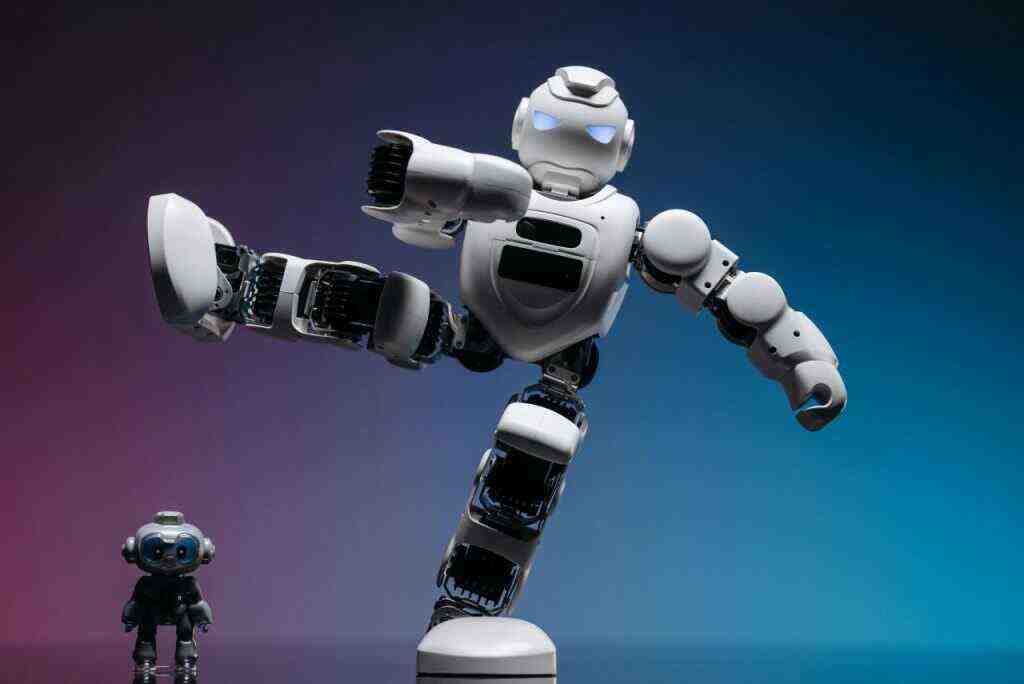The Rise of Humanoid Robots in Car Production: BMW Embraces AI-Powered Automation
2024: A New Era of Human-Robot Collaboration in Manufacturing
The year 2024 marks a pivotal moment in the integration of humanoid robots into the manufacturing sector, as BMW joins the ranks of Tesla and Hyundai in exploring the potential of AI-driven automation. This transformative development promises to revolutionize car production, enhancing efficiency, safety, and productivity.
BMW’s Venture into Humanoid Robotics: A Strategic Partnership with Figure
Inspired by the success of Tesla’s Optimus Gen 2 humanoid robot and Hyundai’s collaboration with Boston Dynamics, BMW embarks on a pioneering partnership with Figure, a start-up dedicated to creating general-purpose robots. This partnership signifies BMW’s commitment to innovation and its vision of a future where robots seamlessly collaborate with humans in the manufacturing process.
Figure’s Mission: Empowering Industries with Versatile Humanoid Robots
Figure’s mission is to create versatile humanoid robots that can adapt to various tasks and environments, transcending the limitations of single-purpose robots. These humanoids are designed to augment human capabilities, enabling companies to optimize productivity, reduce costs, and enhance safety in their operations.
The Allure of Humanoid Robots: A Symbiotic Relationship with Humans
Humanoid robots, with their human-like appearance and dexterity, offer unique advantages in manufacturing. They can navigate complex tasks that require fine motor skills, perception, and decision-making. This symbiotic relationship between humans and robots opens up new possibilities for collaboration, where robots handle repetitive, hazardous, or physically demanding tasks, while humans focus on higher-level cognitive activities.
Addressing Labor Shortages and Enhancing Workplace Safety
The integration of humanoid robots in car production addresses critical challenges faced by the industry. The United States, for instance, is experiencing an unprecedented labor shortage, with millions of jobs remaining unfilled due to safety concerns or undesirable working conditions. Humanoid robots can alleviate this shortage by taking on these tasks, allowing human workers to focus on more fulfilling and rewarding roles.
Envisioning a Future of Humanoid Robots: Beyond Car Production
The potential applications of humanoid robots extend far beyond car production. These versatile machines can serve as household helpers, providing assistance with daily tasks and enhancing accessibility for individuals with disabilities. They can also excel as laboratory assistants, performing intricate experiments with precision and accuracy. Furthermore, humanoid robots hold promise in space exploration, venturing into uncharted territories and assisting astronauts with complex tasks.
Figure’s Commitment to Ethical Robotics: Ensuring Responsible Development and Deployment
Figure recognizes the ethical implications of humanoid robots and takes a proactive approach to responsible development and deployment. The company unequivocally prohibits the use of its robots for military purposes, emphasizing the importance of ensuring that these technologies are used for the betterment of humanity.
BMW’s Initial Deployment: Spartanburg Plant as a Testbed for Humanoid Integration
BMW’s initial foray into humanoid robotics will take place at its Spartanburg plant in South Carolina, a facility dedicated to assembling various off-road vehicles. While the specific roles and tasks assigned to the robots are yet to be disclosed, this pilot program marks a significant step towards integrating humanoid robots into the car production process.
A Glimpse into the Future: Humanoids as Integral Partners in Manufacturing
As humanoid robots continue to evolve and their capabilities expand, they will play an increasingly vital role in manufacturing. They will collaborate seamlessly with human workers, enhancing productivity, safety, and quality. This harmonious partnership between humans and robots promises to usher in a new era of manufacturing excellence.
Tesla Optimus Gen 2: A Harbinger of Humanoid Robotics in Manufacturing
Tesla’s Optimus Gen 2 humanoid robot has captured the imagination of the world with its impressive capabilities. This next-generation robot showcases advanced agility, dexterity, and perception, demonstrating its potential to revolutionize various industries, including manufacturing. Tesla’s ambitious plans for Optimus Gen 2 include deploying millions of these robots across its factories, transforming the production landscape.
Hyundai’s Collaboration with Boston Dynamics: Spotlighting the Potential of Humanoid Robots
Hyundai’s partnership with Boston Dynamics, renowned for its groundbreaking Spot robot, underscores the growing interest in humanoid robotics. Spot’s exceptional mobility and adaptability have made it a versatile platform for various applications, from construction and inspection to security and surveillance. Hyundai’s investment in Boston Dynamics reflects its commitment to exploring the potential of humanoid robots in diverse industries.
A Call for Ethical Considerations: Navigating the Complexities of Humanoid Robotics
The rapid advancement of humanoid robotics raises important ethical questions that society must address. As these robots become more sophisticated and autonomous, concerns arise regarding their impact on employment, safety, privacy, and accountability. It is crucial to establish clear guidelines and regulations to ensure the responsible development and deployment of humanoid robots, safeguarding the interests of both humans and robots.
Conclusion: Embracing the Transformative Power of Humanoid Robots
The integration of humanoid robots into car production, spearheaded by BMW and supported by Figure’s innovative technology, marks a pivotal moment in manufacturing history. These versatile machines have the potential to revolutionize the industry, boosting productivity, enhancing safety, and creating new opportunities for human workers. As humanoid robots continue to evolve, it is imperative to navigate the ethical complexities they present and ensure their responsible integration into
